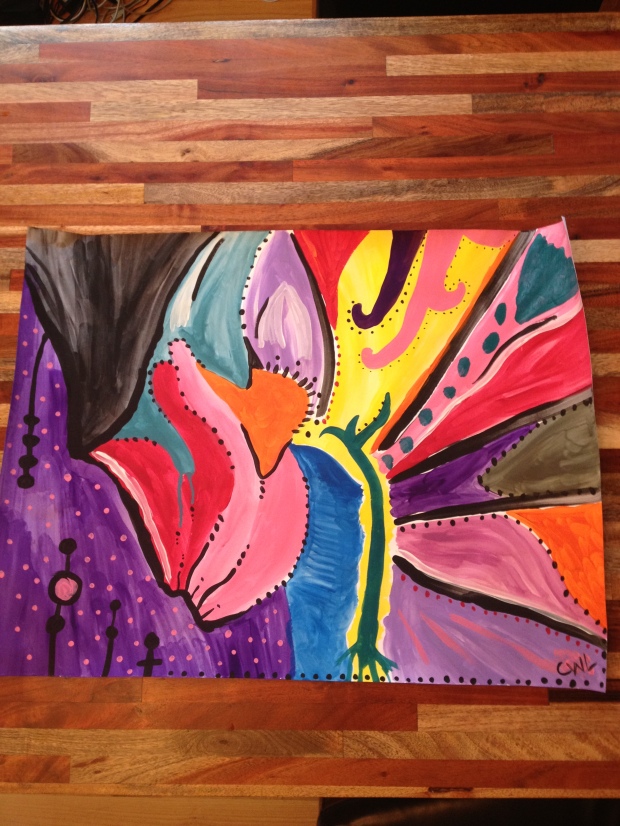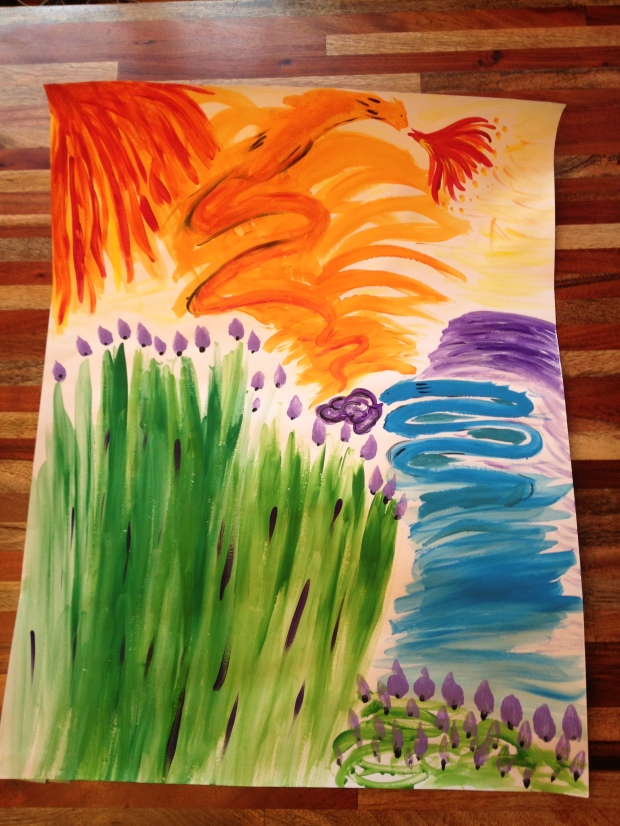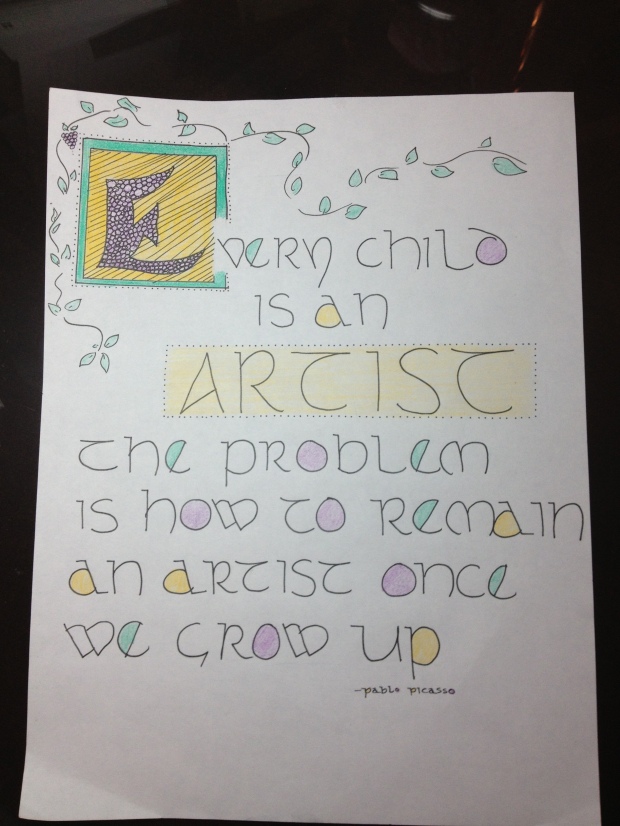so fun! I just took a class from an amazing teacher last week. I had taken classes from her before years ago but she hadn’t offered any classes for a while, so when she did, I jumped at the opportunity. It’s a style of painting called “improv painting” or “process painting” which allows you to just pick a color and paint without planning ahead what you want to do–no judgment, just paint. I loved when the teacher said that we were supposed to focus on where our paintbrush touched the paper because that was where the creative process was and when you think you’re done with a painting you ask yourself, if I had one more stroke to do on this painting what would I do and where would I put it and then do it and you don’t stop painting you just keep putting paint on–no thinking or pondering. It’s based on a book called “Life, Paint, and Passion: Reclaiming the Magic of Spontaneous Expression” by Michele Cassou and Stewart Cubley. The first and most colorful painting I spent almost all of the time on and the second painting I spent what time I had left. Fun, colorful, whimsical!!
Blessings***


